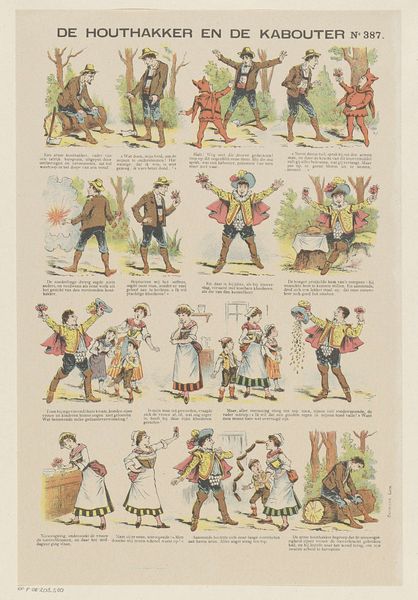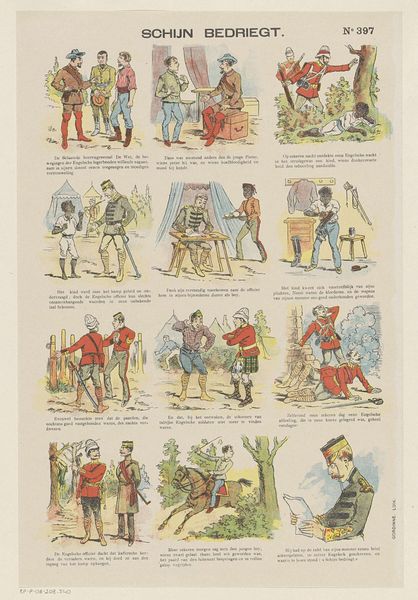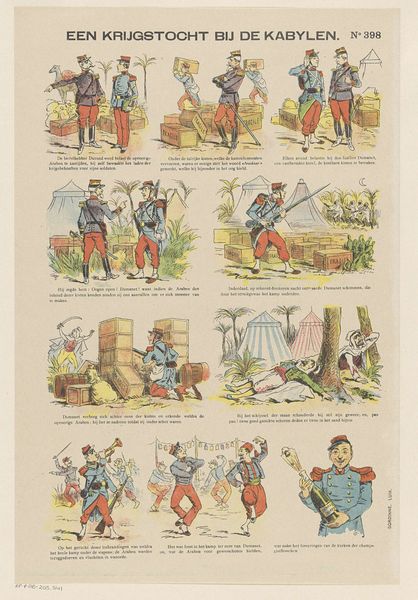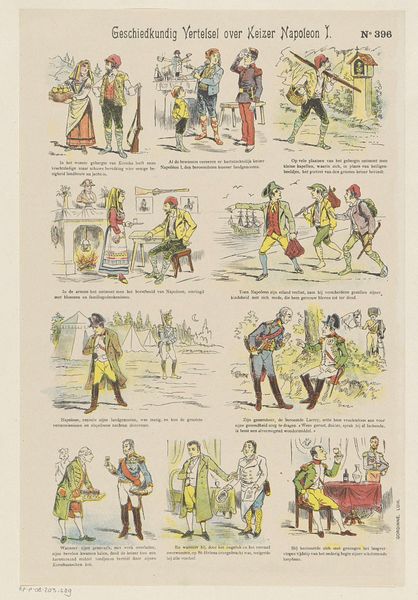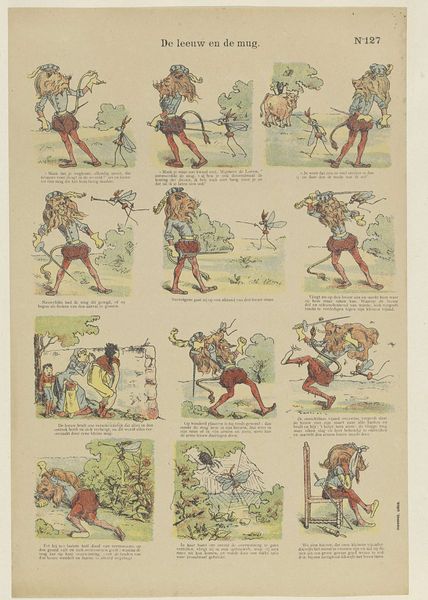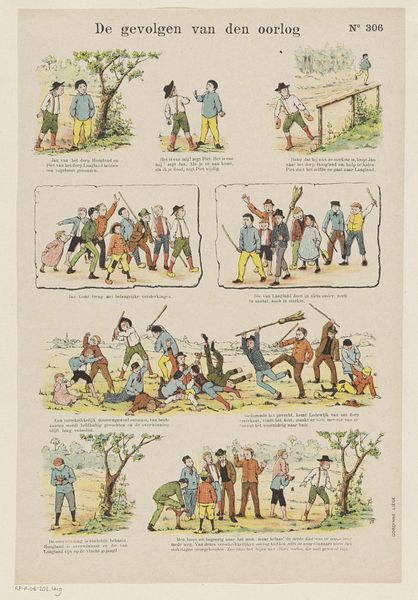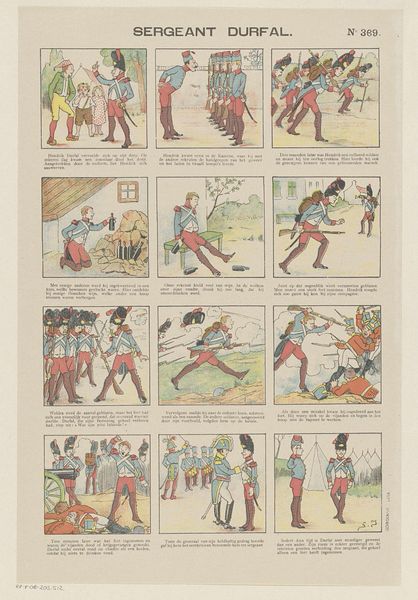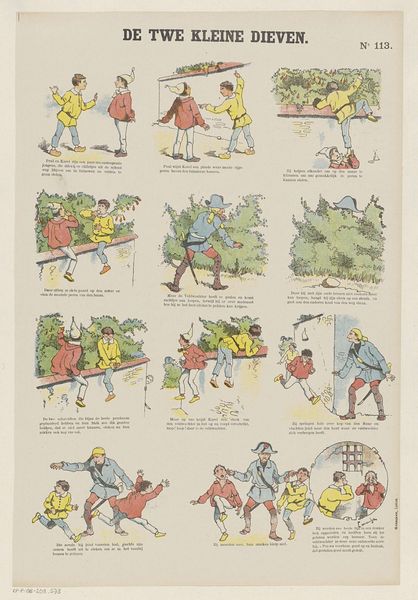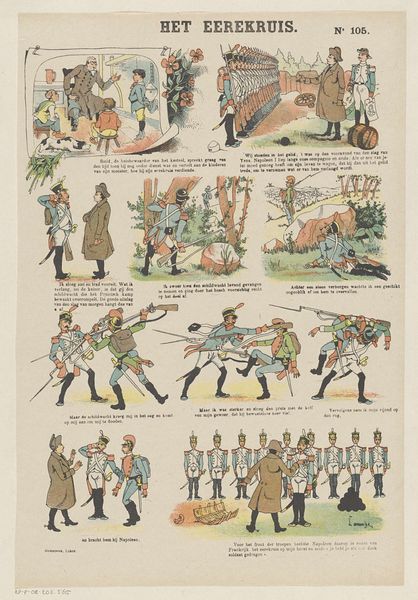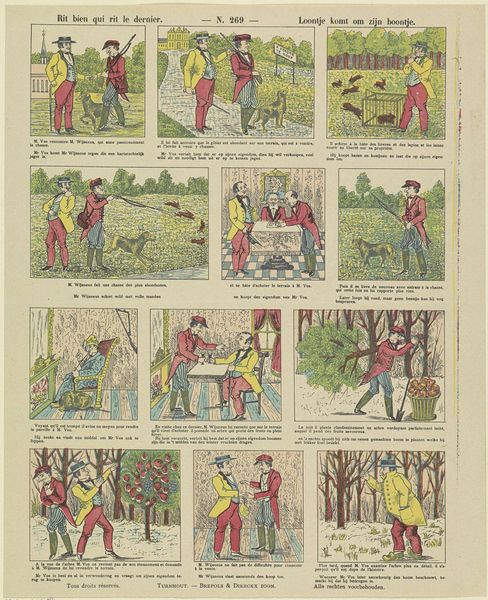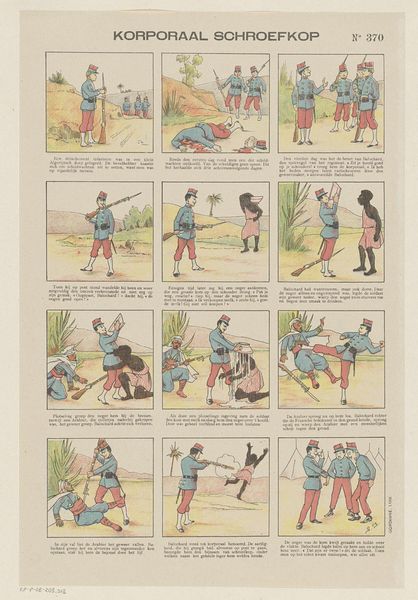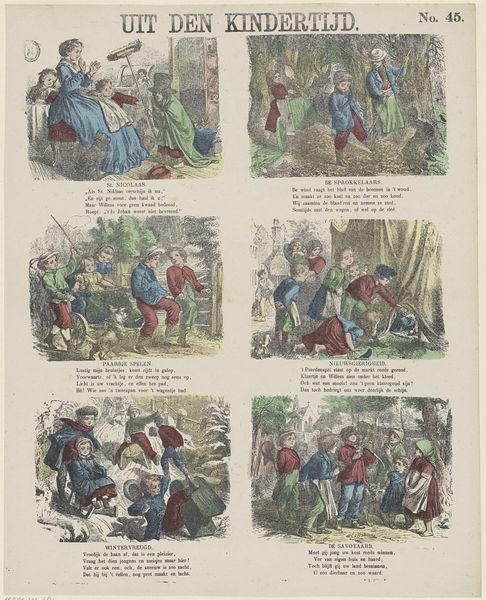
#
comic strip sketch
#
aged paper
#
narrative-art
# print
#
sketch book
#
traditional media
#
personal sketchbook
#
sketchbook drawing
#
watercolour illustration
#
genre-painting
#
storyboard and sketchbook work
#
cartoon carciture
#
sketchbook art
Dimensions: height 400 mm, width 268 mm
Copyright: Rijks Museum: Open Domain
Curator: Welcome. Here we have "Een loos-alarm," dating from 1894-1959 and attributed to Gordinne. It’s currently held in the Rijksmuseum collection. This print presents a comic strip-like sequence, likely intended for a wide audience. Editor: It feels quite light-hearted for a military subject, doesn't it? The pastel colours and cartoonish figures give it an almost childlike quality. What are we seeing here? Curator: The artwork depicts a series of comical scenes featuring soldiers, each vignette sequentially telling a small story, a narrative encapsulated within each frame. Notice the dynamism implied by the layout, inviting our eyes across each tableau. Editor: Indeed. I find myself considering the possible socio-political commentary intended, particularly the representation of the military during that era. Were these playful depictions of soldiers reflective of societal attitudes towards the military, perhaps poking fun at drills and procedures? Or promoting a certain kind of propaganda? Curator: Intriguing perspective. Focusing on the form, notice the artist's use of line and colour to define form. The figures and objects are clearly delineated, albeit with simplified forms, prioritising legibility over realism. The watercolour wash softens the overall impact of the print. Editor: The characters themselves are a focal point. Their exaggerated expressions and gestures feel purposefully overdone. And the storyline, pieced together from individual frames, suggests an everyday moment rather than glorifying warfare itself. I wonder if it might even satirize military preparedness. Curator: Possibly, although it could just as well be light entertainment of the time. The structural element of sequential imagery would have been more pronounced in its time. Each frame is its own semiotic code. Editor: Exactly, and within the frame, note the figures and compositions reflect perhaps the artist's perspective, the audience's desire to be entertained, but perhaps with social relevance too. What could this alarm stand for, within or beyond the image? Curator: The work’s open-endedness leaves room for diverse readings. It seems as much a testament to narrative possibility as it does a commentary. Editor: Agreed. It gives us much to contemplate, both on an aesthetic level, but beyond that. A compelling work!
Comments
No comments
Be the first to comment and join the conversation on the ultimate creative platform.


